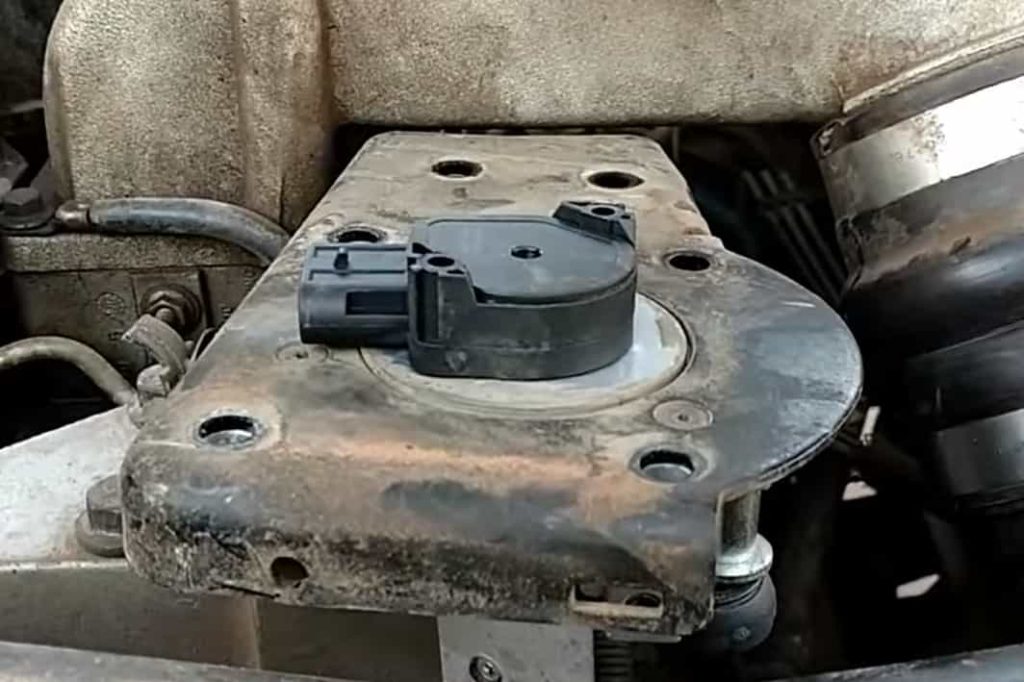Perhaps you are wondering about Cummins throttle position sensor problems, especially when you are having engine concerns with your vehicle.
There are numerous components that make up your truck such as the throttle body system. This system works together in making sure you are able to achieve smooth and efficient acceleration.
So, if you are looking to find out why you are experiencing some issues with idling and accelerating, then it helps to know if you need to replace your existing throttle position sensor, or if a simple reprogramming or repair would suffice.
Basically, the throttle position sensor makes sure your engine maintains the desired amount of air. It is also highly dependent on your throttle valve. Each time you press on your gas pedal, the throttle body valve opens. Hence, the throttle position sensor adjusts your engine intake manifold as need be.
Your vehicle relies on this sensor to achieve the right mixture of fuel and air. It is integrated with the engine control module, which makes acceleration smooth. But if the sensor is malfunctioning or has damages, you need to get it replaced or repaired to maximize your vehicle’s power and performance.
Find out more about the common Cummins throttle position sensor problems and what you can do about these. Let’s dive into it.

Contents
Signs Of Cummins Throttle Position Sensor Problems
Before things take a turn for the worst, it is important to consider some symptoms that let you know if you have throttle position sensor problems. Here they are:
1. Check engine light
This is the most common sign of a problem with your vehicle. But at the same time, it is quite vague since there may also be other issues involved other than just the throttle position sensor. However, you can still inspect the sensor to rule it out when the check engine light is suddenly illuminated.
2. Acceleration changes
Do you notice some changes in how your vehicle accelerates? Perhaps, you are driving normally, yet you have observed some issues such as poor power, hesitations while accelerating, delay or difficulty in shifting your gears, and unusual surges as you accelerate.
These can all be signs of an issue with your throttle position sensor, which you should never take lightly. Furthermore, there may be too much or too little airflow, which can impact your acceleration performance. However, other engine problems may be linked to this symptom.
But if you have seen the fuel economy has reduced greatly, then it is most definitely because of poor air and fuel mixture.
3. Problems with idling
There are also instances when issues with idling efficiently can be a sign of a worn out throttle position sensor. Perhaps, you notice some stalling, hesitating, or surging while you are idling, and these are all possibly because of your faulty sensor.
What To Do Next
When you have observed any of these symptoms, then the next step is to check the source. Use your multimeter to check if your sensor has some electrical connection issues. Inspect your engine control module for any fault code, which could have triggered the check engine light to come on.
This is very important to identify if you need to replace, or just reprogram or repair your sensor. Once you have noticed these symptoms, you should go right ahead to finding the best solution. Although a sensor replacement can easily solve the problem and even eliminate future issues, you may also be able to fix the problem with a simple repair work or reprogramming.
In fact, there have been several people who got good results from resetting or reprogramming the sensor. You may also need to do these steps when you have a new sensor to be installed. To do a rest, simply unhook your negative cable from the battery for about 5 minutes. Or you may have to remove your fuse for the ECM. But never do this step when you are not well-versed in electrical work as it can be dangerous.
A reset may also be necessary for restoring the sensor. Some code errors may lead to a malfunction or erratic functioning of the sensor, this is why reprogramming needs to be done. It is best to have a professional mechanic do this for you.
Now, if the sensor appears to require repair work, this is likely because of some loose wiring or faulty connections. The sensor is vulnerable to faulty connections and corrosion, which is why a repair may be all it takes to fix it. But if the damage is severe, you may need to change the sensor completely or just have it fixed.
When you are thinking of replacing the sensor, there are a few steps to take:
1. Remove the sensor
First, take the old sensor out, which is on the throttle body and above the engine. Before you remove the sensor, disconnect the negative battery cable. This way, you can prevent yourself from getting electrocuted.
Unscrew the screws and take the throttle position out. Check the manual and compare this with the existing sensor you have, and be sure to get it from a quality shop and buy an accurate OEM match.
2. Install the new sensor
With the old one taken out, you can now install the replacement. Connect the sensor to the electrical system and make sure every connection is secure. Follow your mechanic’s installation procedure when replacing or installing the throttle position sensor. This way, you can be sure that it is really stable and will provide the results you want.
Wrap Up
When you encounter some Cummins throttle position sensor problems, it can get overwhelming. Consider these symptoms we have shared with you and the best ways to deal with them whether as a DIY project or with the help of an expert in the Cummins to make sure you get the best results possible.